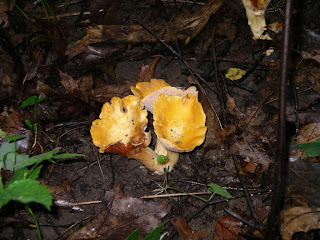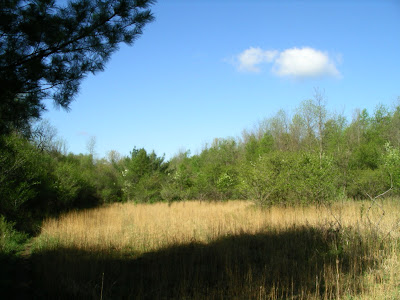 In the foreground we see hairy vetch, with the violet blooms, growing in and "old field" habitat community. This area was once farmed but is now slowly returning to nature. Trembling aspen trees are also beginning to take over in certain areas. The leaves of this tree shake in the lightest of breeze in a manner mostly characteristic of this tree only.
In the foreground we see hairy vetch, with the violet blooms, growing in and "old field" habitat community. This area was once farmed but is now slowly returning to nature. Trembling aspen trees are also beginning to take over in certain areas. The leaves of this tree shake in the lightest of breeze in a manner mostly characteristic of this tree only. "Old field" is also generally the most vulnerable to human intervention through development since it tends to require less effort in preparation for uses other than wildlife habitat. It is one of the most threatened and scarce habitat communities in the state.























